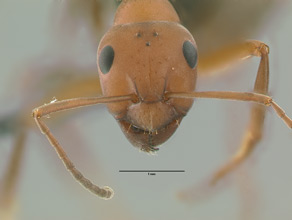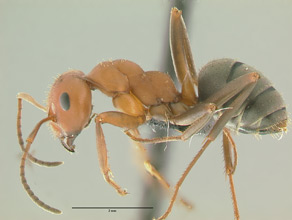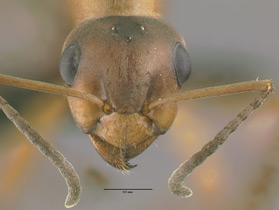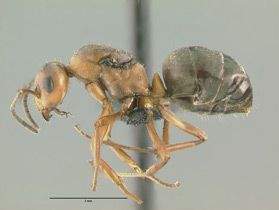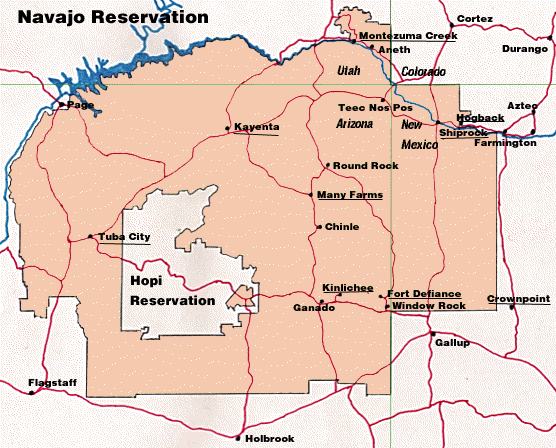- Identification
- A Formica species with a dark gaster (black to brownish-black) and a lighter colored head, mesosoma, petiole, legs and antenna. There is a base brownish-red color on the dorsal areas of the head, mesosoma and petiole with other areas lighter yellow (other parts of the main body) or brown (most of the leg segments). This patterning of color variation, a darker gaster and variable lighter colors for the remainder of the body, is typical for microgyna and rufa species group ants. Two characters set these ants apart from other rufa species, at least on the Navajo Reservation where Formica densiventris is the only known microgyna. One is the presence of a queen that is no larger than the largest worker. The other is the presence of blunt-tipped erect hairs, which are larger towards the ends, on the dorsal area of the mesosoma.
- Biology
- Cole (1954) returned to the type locality and reported finding Formica densiventris in Sapello Canyon, New Mexico. Nests were under stones and logs banked with detritus. The habitat was a moist and rocky north facing slope with a stand of widely scattered yellow pines.
- additional biology notes...
- Distribution
- Range
- Western United States.
- Navajo Reservation Records
- Sample records being processed.
- Additional Notes
- Formica densiventris is a member of the microgyna species group, which is one of a number of groups within the genus Formica. The microgyna are exclusive to North American and are set apart from what appears to be their closest relatives - the rufa species group - by their small queens. These queens tend to be as small or smaller than their medium sized workers. Workers resemble rufa group species, at least in their coloration, but have erect hairs on the dorsal surface of their mesosoma that are enlarged at their blunt tipped ends.
- All of the microgyna species are believed to be temporary social parasites of other ants. The small queens somehow gain entry to the nest of a foreign species and effectively dispatch the natal queen. The foreign queen then begins laying egg that are cared for by the workers. The original nest inhabitants are eventually replaced by a pure colony of workers that are all related to the parasitic queen.
- Etymology
- Morphological. densus = dense or thick; venter = belly; is = with, having
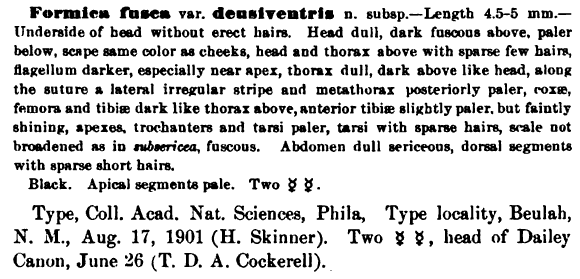
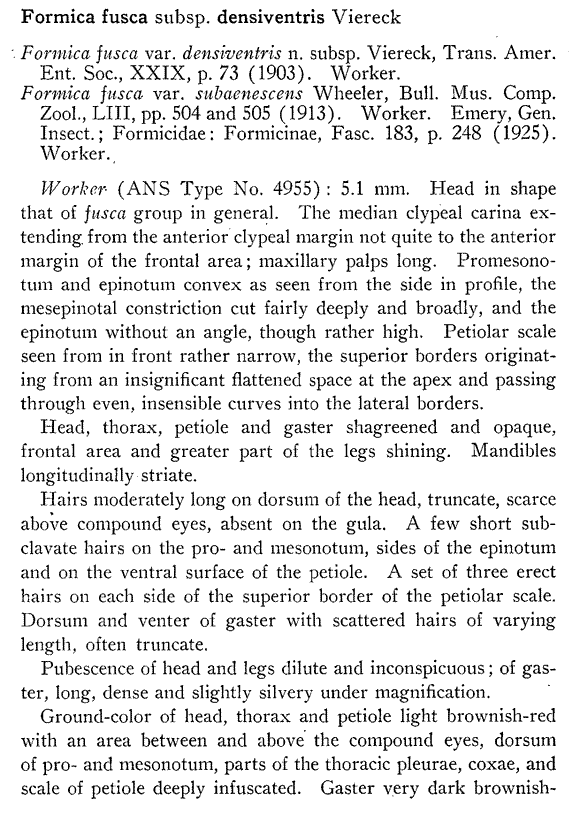
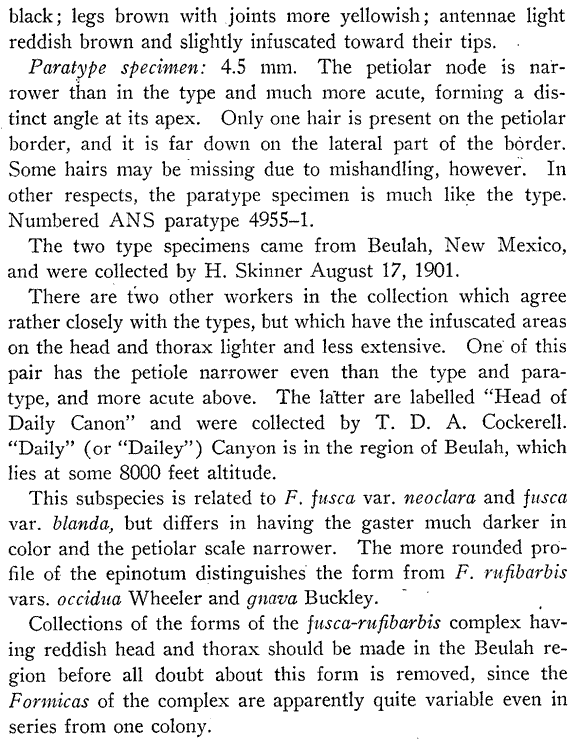
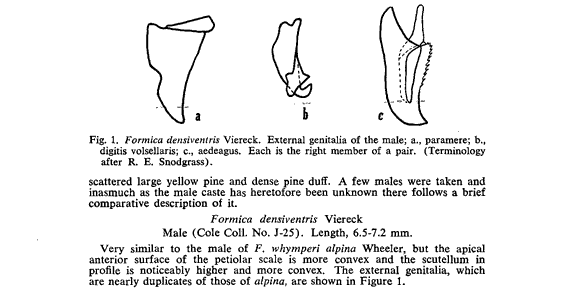
- Literature
- Brown, W. L., Jr. 1947. A note upon two neglected species of Formica Linn. (Hym.: Formicidae). Entomological News. 58:6-9.
- Cole, A. C., Jr. 1954. Studies of New Mexico ants. VIII. A solution to the Formica densiventris Viereck problem (Hymenoptera: Formicidae). Journal of the Tennessee Academy of Science. 29:89-90.
- Viereck, H. L. 1903. Hymenoptera of Beulah, New Mexico. Transactions of the American Entomological Society. 29:56-87.
- A note about these publications. The literature cited here is not meant to be an exhaustive list of papers published about this species.
Page authored by David Lubertazzi and Gary Alpert
